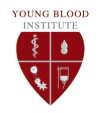|
The good news for patients: medical procedures can’t be patented anywhere in the world, except the U.S.
The bad news for inventors: medical procedure patents can’t be enforced in the U.S. Funny that intellectual property often becomes the first thing many people think about when hearing of the potential to save mankind from the agonies of aging. In my travels, I’ve met at least two doctors and “inventors” who claimed to have a patent or patent application on “young blood” – and, apparently, one of them actually had his patent accepted by the U.S. Patent and Trademark Office. I’m not a patent attorney, but I have created and run intellectual property licensing companies that licensed technology to many, many multi-billion companies around the world. I’ve developed hardware and software products built on a foundation of intellectual property. I have reviewed, overseen, processed, and paid for over 200 patent applications…authored individually and collaboratively by some of the most talented scientists, engineers, chemists, and physicists in the world. So when I met these two unrelated doctors, neither of whom knows the other, at different points in time, they seemed surprised to learn that medical procedures (or phenomena of nature) can't be patented. I have nothing against intellectual property protections, or intellectual property attorneys -- I've employed or engaged many of them, obtained many patents. But the prohibition against patenting medical procedures (or enforcing them, as in the U.S.) has strong basis in humanitarian concerns, significantly different than a better smartphone or tablet computer. Over 80 countries prohibit medical procedure patents. General Agreements on Tariffs and Trade Agreement on Trade Related Aspects of International Property Rights (GATT-TRIPs) exclude medical procedures from patentability: "Members may also exclude from patentability: (a) diagnostic, therapeutic and surgical methods for the treatment of humans or animals" (Article 27). In the US, current law does not prohibit the patenting of medical methods, but it provides an exception for medical professionals in cases where medical method patents are infringed, thereby limiting the enforcement of patent rights on medical methods. Further, US case law is moving even further away from broad medical procedure patents. In Mayo Collaborative Services v. Prometheus Laboratories, Inc., 566 U.S. — (2012), the Court invalidated Prometheus's patent on a diagnostic method that involved administering thiopurines and observing chemical reactions in the body as a basis for dosing advice, stating that the patent improperly claimed a natural law. In 2013, a federal court invalidated a patent held by Sequenom covering the detection of cell-free DNA in the bloodstream of pregnant women. 2013 – Oct. the US District Court for the Northern District of California granted Ariosa Diagnostics summary judgment and invalidated US Patent No. 6,258,540, saying the patent covers a phenomenon of nature, which is “unpatentable.” I would expect these trends to continue as they have, despite many researchers' devoted attention to discovering and patenting the inner workings of nature itself. Of course, medical devices and other inventions of people themselves can be patented. We could almost consider the difference to be like inventing a tool (patentable) v. using a tool (not patentable/enforceable). Plenty of health care businesses created success without patents. Red Cross stands out, and Kaiser Permanente has made many meaningful business model and health care delivery innovations, both as non-profit corporations. With 7 billion people in the world, all of whom will reach an elderly age, we all have plenty of opportunity for many to both help mankind and run a successful healthcare business...without excluding others from doing the same.
0 Comments
Leave a Reply. |
AuthorWrite something about yourself. No need to be fancy, just an overview. Archives
June 2024
Categories |

 RSS Feed
RSS Feed